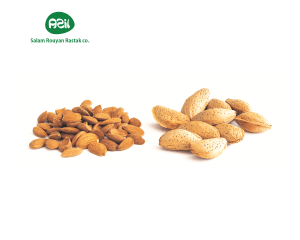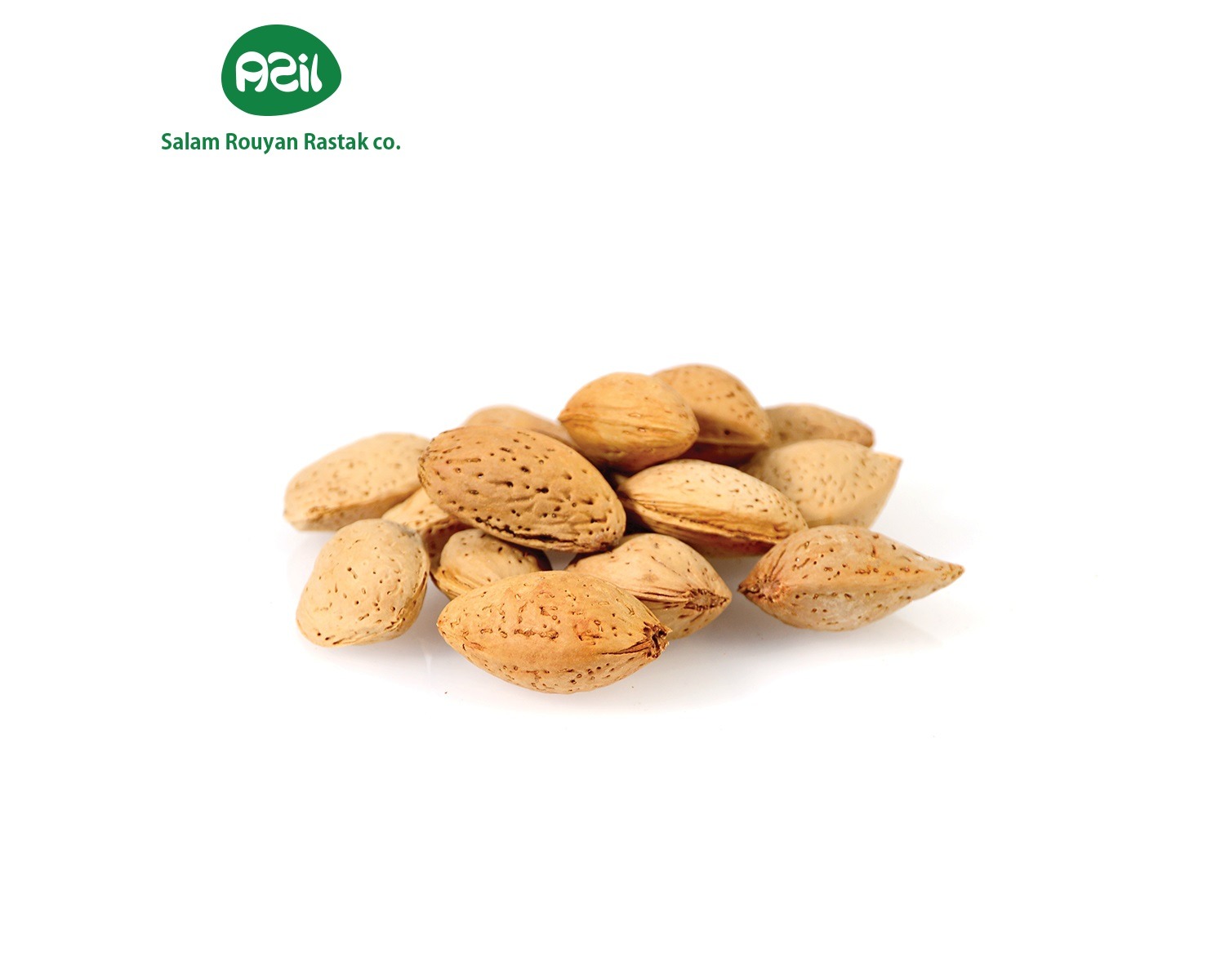Persian Almonds in Autumn Harvest Dances
Persian almonds, with their crisp richness, enliven Iran’s autumn harvest dances, energizing celebrations. Known as “badam,” these nuts shine at 06:03 AM CEST on August 27, 2025. For example, families share them during rhythmic outdoor festivities. This article explores how Persian almonds enhance autumn harvest dance traditions, their cultural significance, and their health benefits. We’ll also dive into their cultivation, preparation, and global appeal. As exporters of saffron, nuts, and more, we share Iran’s finest badam too. So, discover why these almonds are a dance treasure, how they’re used in Persian autumn harvests, and why they’re cherished worldwide. Join us to explore this hearty gem and see what makes it a Persian seasonal essential this morning!
Introduction

Azil Organic Marma Almond
Persian almonds bring crisp richness to Iran’s autumn harvest dances, energizing celebrations at 06:03 AM CEST on August 27, 2025. Iranians call these nuts “badam,” grown in regions like Chaharmahal and Bakhtiari, and they shine when families share them during rhythmic outdoor festivities. This hearty gem fuels the joy of the season. We export saffron, nuts, and dates, but this isn’t just about trade—it’s about their role in cultural expression. Therefore, this article explores how Persian almonds enhance autumn harvest dance traditions, their cultural significance, and their health benefits. Let’s uncover this lively practice!
Persian Almonds in Harvest Dance Snacks
In Persian culture, participants use Persian almonds as snacks during autumn harvest dances. They often munch badam to sustain energy for lively steps. For instance, many carry this hearty gem in pouches for a quick boost. Also, they share almonds with tea to enhance the festive mood. This choice brings stamina, so Persian almonds are a dance favorite.
Badam in Autumn Harvest Dance Treats
Beyond snacks, badam plays a key role in Persian autumn harvest dance treats. Families roast Persian almonds to offer during breaks in the dance circle. They also mix this hearty gem with honey for a sweet energy source. Another idea involves coating almonds in spices for a flavorful treat. These offerings often invigorate dancers, showcasing seasonal abundance. As a result, this hearty gem enhances dance moments across Iran.
How Farmers Cultivate This Hearty Gem
Farmers carefully cultivate this hearty gem to ensure it’s ready for autumn use. The process starts with almond trees flowering in late winter, so nuts develop by fall. They tend the trees in Chaharmahal and Bakhtiari with care to support growth in hilly terrains. Then, they harvest badam when shells harden. Finally, they dry the almonds to preserve flavor for dances. This method keeps Persian almonds fresh for festivities throughout Iran.
Preparing Persian Almonds for Harvest Dances
Communities prepare Persian almonds to shine in autumn harvest dances. For example, they roast badam with salt to create savory snacks for dancers. They also shell this hearty gem to offer raw nuts during celebrations. Another method involves chopping almonds for mixing into dance-time sweets. Some even pack badam in decorative bags for gifting. Because of these preparations, this hearty gem elevates every dance moment.
Health Benefits of This Hearty Gem
This hearty gem offers health benefits that suit autumn harvest dance participants. Persian almonds contain healthy fats, providing energy for vigorous movements. They also offer vitamin E, protecting skin from crisp air. Moreover, their fiber aids digestion, a relief after snacking, per studies. Their magnesium supports muscle function, enhancing wellness. Therefore, enjoying badam in dances means adding health to every step.
Cultural Significance of Badam in Autumn Harvest Dances
In Iran, badam holds deep cultural significance in autumn harvest dance traditions. Using Persian almonds symbolizes prosperity, a value tied to seasonal yields. Ancient customs mention this hearty gem in dance feasts to celebrate abundance. Also, badam often appears in dance snacks, representing gratitude. In rural areas, these nuts signify community joy during harvest. Consequently, this hearty gem weaves tradition into Iran’s dance customs.
Almonds and Iran’s Autumn Harvest Dance Heritage
Iran’s autumn harvest dance heritage thrives with this hearty gem. Farmers in Chaharmahal and Bakhtiari grow Persian almonds, supporting communities who use them in festivities. Since they’re a seasonal delight, using badam in dances shows cultural pride. Markets buzz with almond sales before autumn, delighting dancers at 06:03 AM CEST on August 27, 2025. We export saffron, nuts, and these treasures, connecting them to Persian heritage. Thus, this hearty gem remains a cornerstone of Iran’s dance traditions.
Global Appeal of Persian Almonds
Around the world, people embrace this hearty gem in their own autumn harvest dances. Its robust flavor makes it a favorite for global celebrants seeking energy. For example, European festivals use Persian almonds in dance snacks, inspired by Iranian customs. Also, global markets sell badam for harvest treats, spreading its charm. In Asia, people include these nuts in autumn dance events. Iran shares this hearty gem worldwide, so its dance appeal grows.
Challenges with Using These Nuts
Using these nuts for autumn harvest dances can face hurdles. Rain in Chaharmahal and Bakhtiari, for instance, delays badam harvests, limiting supply for events. Pests like borers sometimes damage crops, affecting quality. Additionally, preparing Persian almonds for dances takes effort, making it labor-intensive. However, Iran ensures these nuts remain available for tradition. This effort keeps the heritage alive despite challenges.
Opportunities to Share Dance Badam
The future offers chances to expand these dance traditions. This hearty gem in harvest kits could, for example, become a global trend for dancers. Creating badam-based snack blends for international markets is another idea. Furthermore, participants worldwide could buy these almonds online for their autumn dances, extending their reach. We’re committed to sharing these treasures for global celebration. So, these opportunities ensure this hearty gem has a rhythmic future ahead.
How to Choose the Best Persian Almonds
Looking for the best badam for your autumn harvest dances? Check for a hard shell—they shouldn’t feel soft, ensuring freshness. Also, look for a light brown color, a sign of quality. Taste them for a rich flavor, perfect for snacks. Source them from us because we guarantee the best badam for your needs. This way, you’ll have top-quality almonds for every dance.
Almonds in Global Autumn Harvest Dance Practices
Globally, this hearty gem enhances autumn harvest dance practices in unique ways. In Iran, for instance, dancers use badam in festivities at 06:03 AM CEST on August 27, 2025. European harvest celebrations feature these nuts in dance treats. In Asia, people enjoy this hearty gem during autumn dance events, delighting crowds. You can also roast badam for a dance energy boost. These practices show how Persian almonds enrich global traditions.
The Future of This Hearty Gem in Autumn Dances
Looking ahead, this hearty gem will shine in autumn harvest dances worldwide. Sustainable farming can manage rain, so supplies remain steady for events. Also, people increasingly seek nutritious snacks like badam for their celebrations. We’re ready to share this awesome almond, along with saffron and more, for global traditions. Therefore, this treasure will remain a dance favorite for years to come.
Conclusion
This hearty gem blends crisp flavor with the rhythm of autumn harvest dances in Iran and beyond. Its taste, cultural role, and health benefits make it beloved in seasonal joy. If you’re joining a dance, badam invites you to add a Persian touch. We deliver Iran’s best with care, so you can trust our quality. Want to try it? Contact us to get this hearty gem for your next event at 06:03 AM CEST on August 27, 2025. Let’s share this lively delight together!

